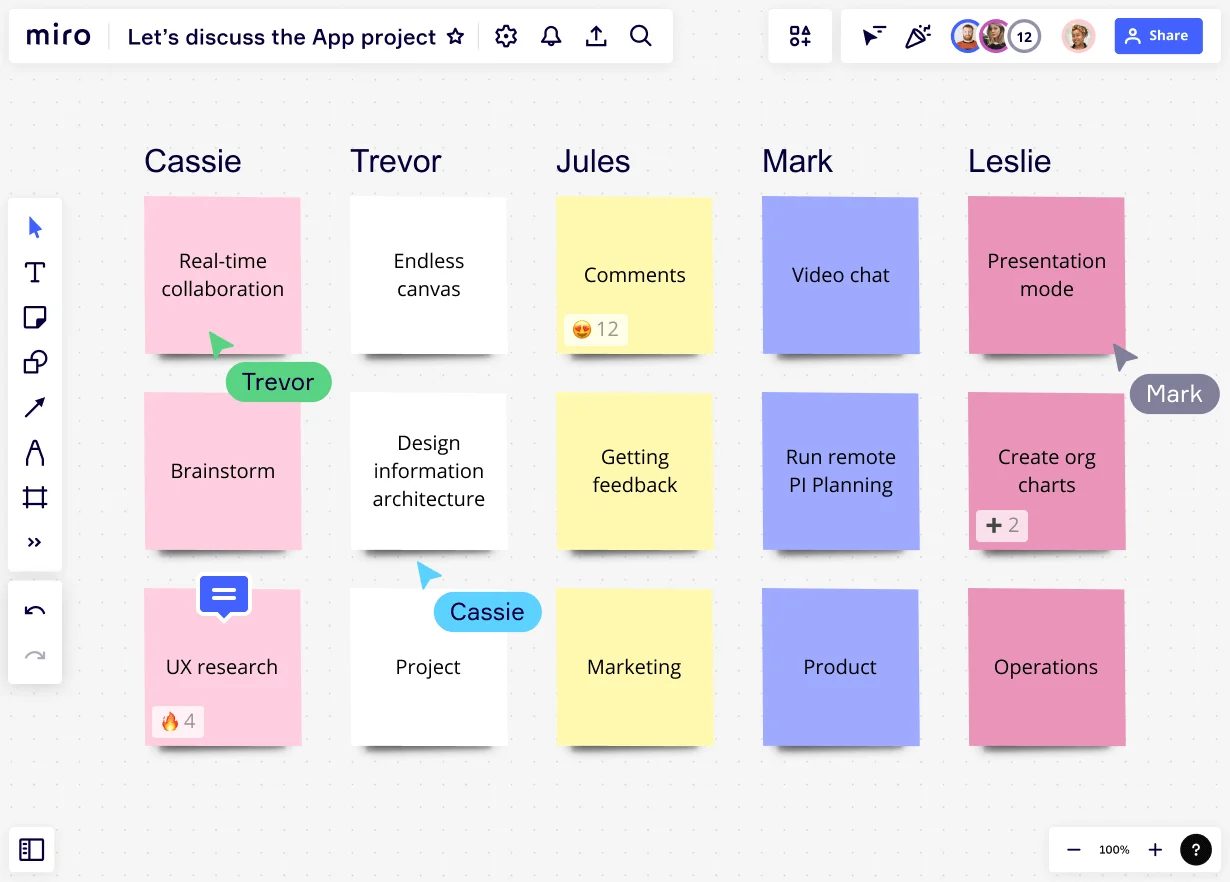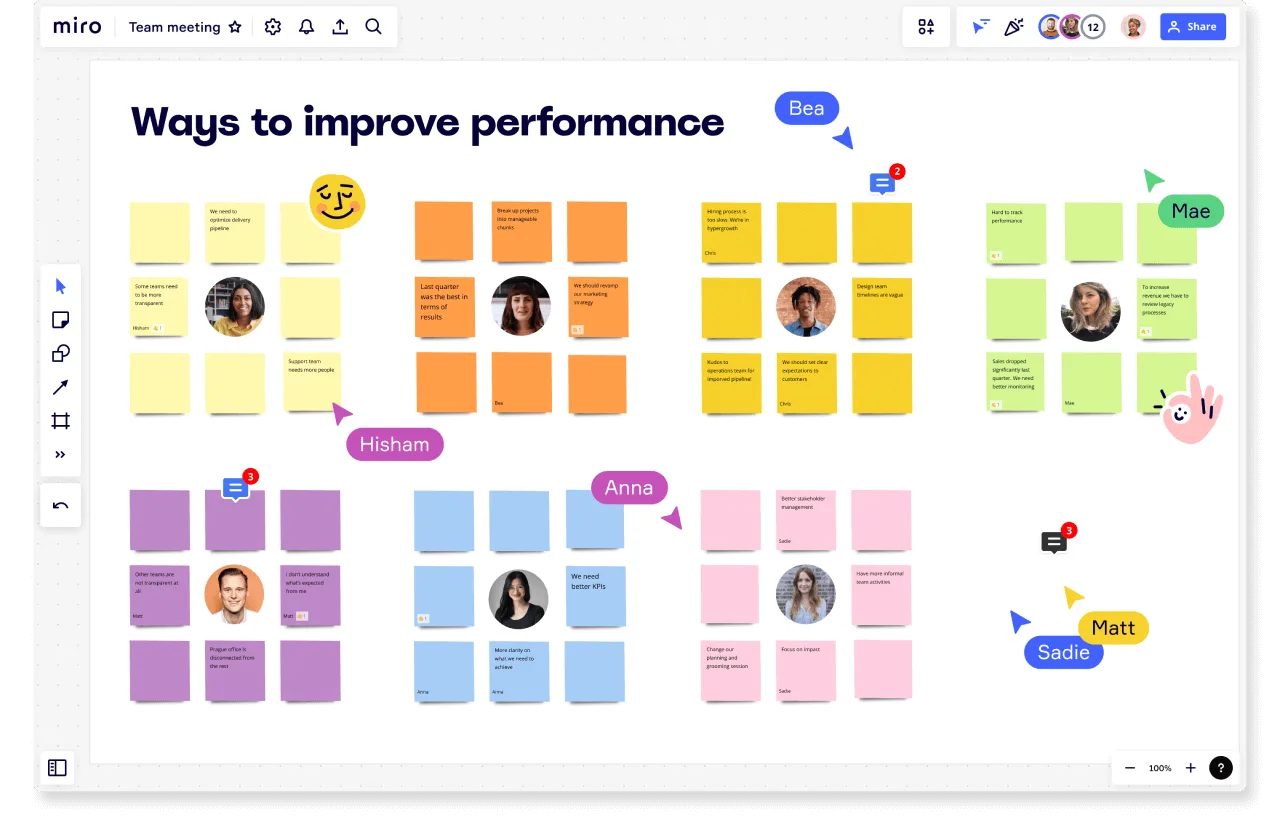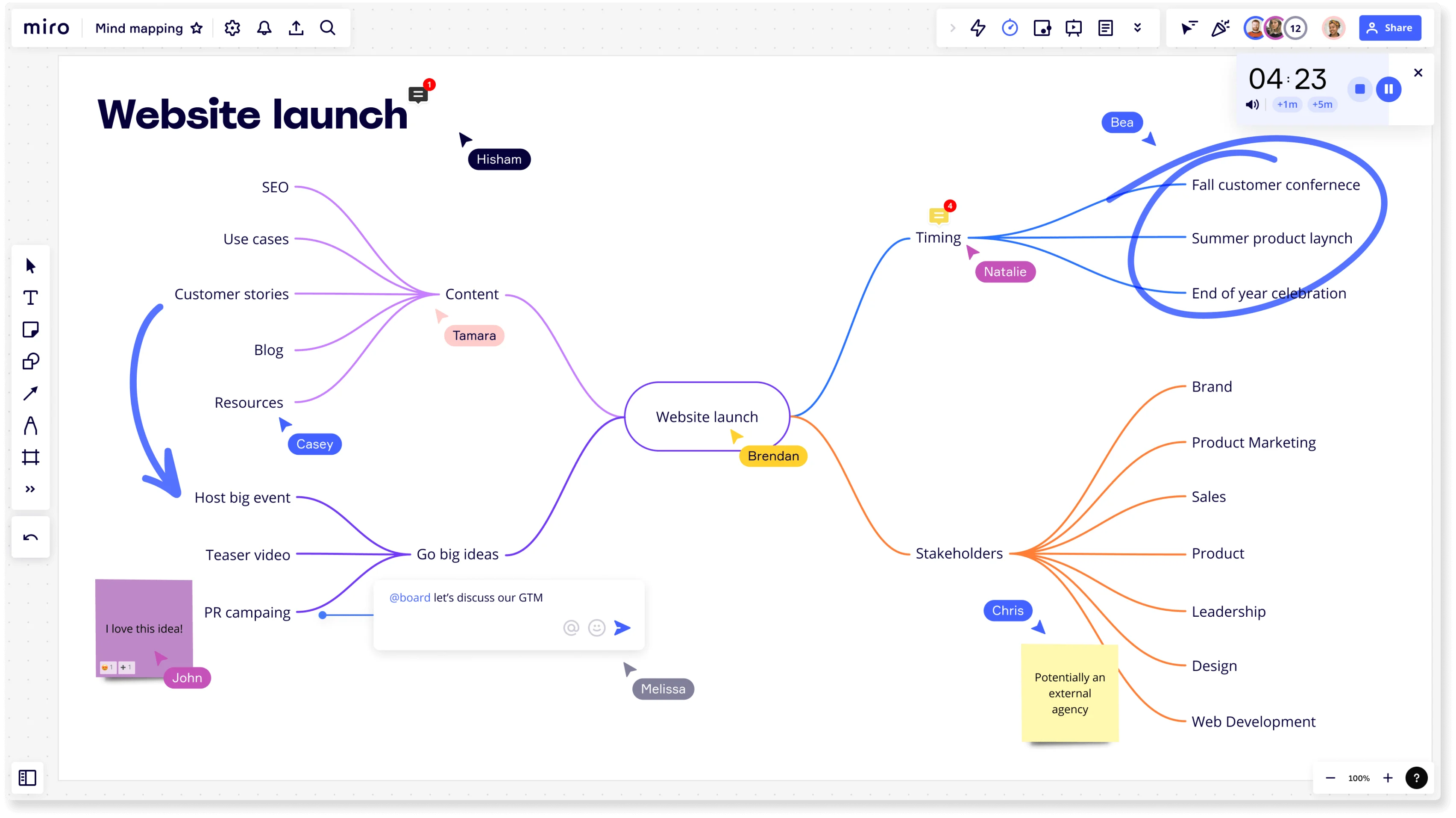
Table of Contents
Table of Contents
When to use brainstorming

When to use brainstorming (and which techniques are most helpful)
Brainstorming is an exceptionally valuable technique for fostering collaboration and driving innovation in the workplace. When utilized in a team setting, brainstorming harnesses the collective intelligence and diverse perspectives of team members, leading to remarkable results. Understanding when to employ brainstorming in a team environment is crucial for maximizing its collaborative benefits.
Brainstorming for complex problems
When confronted with complex tasks or problems, brainstorming becomes an invaluable tool. By bringing together individuals with different backgrounds, expertise, and viewpoints, brainstorming enables teams to break down intricate challenges into manageable components.
Through open and non-judgmental discussion, brainstorming facilitates the exploration of various perspectives and generates fresh insights. It encourages team members to think freely and creatively, leading to innovative ideas and effective problem-solving approaches.
Moreover, brainstorming in a team setting promotes divergent thinking, which is essential when tackling complex problems. By encouraging each team member to contribute their unique ideas and solutions, brainstorming opens up new avenues of exploration.
This collaborative approach enhances problem understanding and allows teams to approach complex tasks from different angles, ultimately leading to more comprehensive and successful outcomes.

The collaborative nature of team brainstorming
Brainstorming is particularly beneficial for team tasks or projects due to its collaborative nature. It fosters active engagement, open communication, and team cohesion. By creating a supportive environment where every team member's input is valued, brainstorming encourages open dialogue and idea sharing. It empowers individuals to express their thoughts, sparking lively discussions that drive innovation and creativity.
When done in a team setting, brainstorming leverages the collective intelligence of the group. Through collaboration, team brainstorming facilitates the identification of connections between ideas, refinement of concepts, and the synthesis of innovative approaches — these diverse perspectives often leads to breakthrough solutions that may not have been possible through individual thinking alone.
Furthermore, team brainstorming cultivates a sense of ownership and shared responsibility. When team members actively participate in generating ideas and problem-solving, they become more invested in the team's success.
Effective scenarios for collaborative brainstorming
Group brainstorming holds immense potential for driving innovation and overcoming organizational challenges. Here are a few scenarios where harnessing the collaborative aspects of brainstorming can yield significant benefits:
Product development and innovation
In the realm of product development and innovation, brainstorming can be a powerful catalyst. It allows cross-functional teams to come together, combining their expertise and insights to generate new ideas and uncover novel concepts. By leveraging the collective creativity and diverse perspectives of team members, brainstorming sessions spur the generation of innovative product ideas and solutions.
The collaborative nature of team brainstorming cultivates an environment that nurtures out-of-the-box thinking and encourages risk-taking, which can lead to groundbreaking product advancements and competitive advantages.
Addressing organizational challenges
Organizations face various challenges, such as streamlining processes, improving communication, or adapting to changing market conditions. Team brainstorming offers an effective approach to address these difficulties collaboratively. By involving individuals from different departments and levels of the organization, brainstorming sessions facilitate the sharing of insights, perspectives, and potential solutions.
This collaborative problem-solving enables teams to develop comprehensive strategies and action plans. Whether it's overcoming interdepartmental conflicts, enhancing employee engagement, or tackling organizational inefficiencies, team brainstorming empowers organizations to leverage the collective wisdom of their workforce for impactful solutions.
Brainstorming techniques for enhanced collaboration
To enhance collaboration and creativity during brainstorming sessions, various techniques can be employed. Here are a few notable brainstorming techniques that work well in group settings:
Reverse brainstorming
Reverse brainstorming is an innovative technique that flips the traditional brainstorming process. Instead of generating ideas to solve a problem, the focus is on identifying potential causes or exacerbating factors of the problem. By approaching the problem from this different perspective, teams can uncover fresh insights and innovative solutions. Reverse brainstorming encourages teams to think critically and encourages them to develop strategies to avoid or mitigate the identified causes.
Mind mapping
Mind mapping is a visual brainstorming technique that helps teams organize and connect ideas in a structured manner. It involves creating a central idea or theme and then branching out with related concepts and sub-ideas. The visual representation of interconnected thoughts stimulates creativity and aids in exploring different dimensions of a problem or solution. Creating a mind map provides a holistic view of the brainstorming session, allowing teams to easily identify patterns, prioritize ideas, and develop coherent action plans.

Round-robin brainstorming
Round-robin brainstorming ensures equal participation and encourages collaboration among team members. In this technique, each team member takes turns contributing an idea, going around the group until everyone has had an opportunity to share. This approach prevents dominant individuals from monopolizing the discussion and encourages quieter team members to contribute their ideas without interruption. Round-robin brainstorming fosters a supportive and inclusive environment that values each team member's input.
Brainwriting
Brainwriting is a written brainstorming technique that promotes simultaneous idea generation. Instead of verbalizing ideas, team members jot down their ideas within a specified time frame. These written ideas are then shared and built upon by other team members. Brainwriting reduces the pressure of speaking up in a group setting, allows for individual reflection, and ensures that all ideas receive equal consideration. It encourages collaboration through the collective exploration and refinement of written ideas.
Scenarios where brainstorming may not be the best approach
While team brainstorming is a powerful collaborative technique, it may not always be the best approach in certain situations. Recognizing its limitations and considering alternative methods is essential to ensure effective decision-making and problem-solving.
While brainstorming sessions can result in generating a wide range of ideas and solutions, there are scenarios where alternative approaches may be more suitable. For instance, when dealing with highly technical problems, it may be more beneficial to involve subject matter experts who possess specialized knowledge and experience. Similarly, situations that require extensive data analysis or evidence-based decision-making may warrant a more structured and analytical approach rather than relying solely on brainstorming.
Additionally, in scenarios where there are tight deadlines or time constraints, brainstorming may slow processes down. Limitations in time can impact the depth of ideas generated, potentially compromising the quality of outcomes. The open and non-judgmental nature of brainstorming can result in a large number of ideas that require further evaluation and refinement before implementation, which can be a time-consuming process in itself.